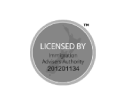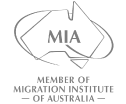Planning a move to Australia as a skilled migrant involves navigating a sometimes complex, but ultimately rewarding process. A crucial step on this path is the skills assessment, which verifies that your qualifications and experience meet Australian standards. This article simplifies this process by focusing on three of the most frequently encountered skills assessment authorities. Think of this as your executive summary!
What is a Skills Assessment and Why Do I Need One?
The Australian government requires most skilled migrants to undergo a skills assessment, conducted by an assessing authority relevant to your nominated occupation. This assessment confirms your qualifications, work experience, and overall skill level are comparable to an Australian standard. It’s like a credential evaluation, but industry-specific. A positive skills assessment is generally essential for visa applications like the Subclass 189 (Independent) visa, Subclass 190 (State Nominated) visa, and Subclass 491 (Skilled Work Regional (Provisional) visa.
Think of it this way: you wouldn’t invest in a company without due diligence. Similarly, the Australian government wants to ensure skilled migrants contribute meaningfully to the economy.
Three Key Skills Assessment Authorities for Skilled Migrants
While numerous assessing authorities exist, depending on your occupation, here’s an overview of three of the most common:
1. Engineers Australia (EA)
Engineers Australia is the designated assessing authority for engineering occupations. If you are an engineer seeking to migrate to Australia, you will likely need to have your qualifications and experience assessed by EA.
- Who They Assess: Engineers Australia assesses a wide range of engineering disciplines, including civil, mechanical, electrical, chemical, and aerospace engineering.
- Assessment Pathways: EA offers several assessment pathways, depending on your educational qualifications. These include Australian qualifications, Washington Accord qualifications, Sydney Accord qualifications, Dublin Accord qualifications, and non-accredited qualifications. Choosing the right pathway is critical.
- Key Requirements: Prepare to submit detailed academic transcripts, curriculum vitae, and, for some pathways, a Competency Demonstration Report (CDR). The CDR is particularly important for engineers with non-accredited qualifications, as it allows you to demonstrate how your skills and experience meet Australian standards. You’ll need to articulate your engineering experience relating to the occupation including problem solving, management, and communication.
2. Australian Computer Society (ACS)
For IT professionals, the Australian Computer Society (ACS) is usually the relevant assessing authority.
- Who They Assess: The ACS assesses a broad spectrum of IT occupations, including software engineers, programmers, systems analysts, and database administrators.
- Assessment Types: ACS offers several types of skills assessments, including a Skills Assessment for migration purposes, a Recognition of Prior Learning (RPL) assessment, and assessments for specific visa subclasses.
- Key Requirements: ACS emphasizes relevant work experience. For many applicants, particularly those without an Australian ICT qualification, the “Relevant Work Experience” pathway will be essential. This pathway requires a certain number of years of experience that directly relates to your nominated occupation. If your degree isn’t closely related to your nominated occupation you will need to show more years of experience. If you lack a formal IT qualification, the RPL pathway requires a detailed project report demonstrating your skills and knowledge. The ACS has a very specific checklist for the RPL application.
3. Trades Recognition Australia (TRA)
Trades Recognition Australia (TRA) is the assessing authority for a wide range of trade occupations. Unlike EA and ACS, TRA focuses on practical skills and vocational training.
- Who They Assess: TRA assesses various trades, including electricians, plumbers, carpenters, mechanics, and chefs.
- Assessment Process: The TRA assessment process often involves a combination of documentary evidence, practical assessments, and interviews. In some cases, you may need to complete a practical assessment in Australia. One assessment pathway is the Offshore Skills Assessment Program (OSAP).
- Key Requirements: TRA places significant emphasis on practical experience and on-the-job training. You’ll need to provide detailed evidence of your employment history, training records, and, if required, successfully complete a practical assessment to demonstrate your competence. You may need to provide references that confirm the skillset requirements of your nominated occupation.
Maximizing Your Chances of a Positive Assessment
The skills assessment is critical, so it’s worth taking steps to optimize your application.
- Thoroughly Research Your Nominated Occupation: Each assessing authority has specific requirements for different occupations. Carefully review the assessment criteria for your specific occupation. Understanding the nuances can significantly increase your chances of a positive outcome. Start by reviewing the Australian and New Zealand Standard Classification of Occupations (ANZSCO) code.
- Gather Comprehensive Documentation: Collect all required documents before you begin the application process. This includes academic transcripts, employment references, and any other evidence that supports your claim of skills and experience.
- Address Potential Gaps: If you have any gaps in your qualifications or experience, be prepared to address them proactively. For example, if your qualifications are not fully accredited, consider completing relevant professional development courses, or highlighting relevant on-the-job experience.
- Consider Professional Assistance: If you find the process overwhelming, consider engaging a registered migration agent. A skilled agent can guide you through the requirements, help you prepare your application, and represent you in your dealings with the assessing authority. But remember to choose wisely, selecting a registered agent with a proven track record.
- Pay Attention to Detail: Seemingly minor errors or inconsistencies in your application can lead to delays or even a negative outcome. Double-check all information before submitting your application.
Conclusion
Navigating Australia’s skills assessment process can seem daunting, but with proper preparation and a clear understanding of the requirements, you can significantly increase your chances of a successful outcome. By focusing on these three key assessing authorities – Engineers Australia, Australian Computer Society, and Trades Recognition Australia – you will be well on your way to having your skills recognized and paving the way for your migration to Australia. Remember to tailor your approach to your specific occupation and circumstances, and consider seeking professional help if needed. Good luck!










